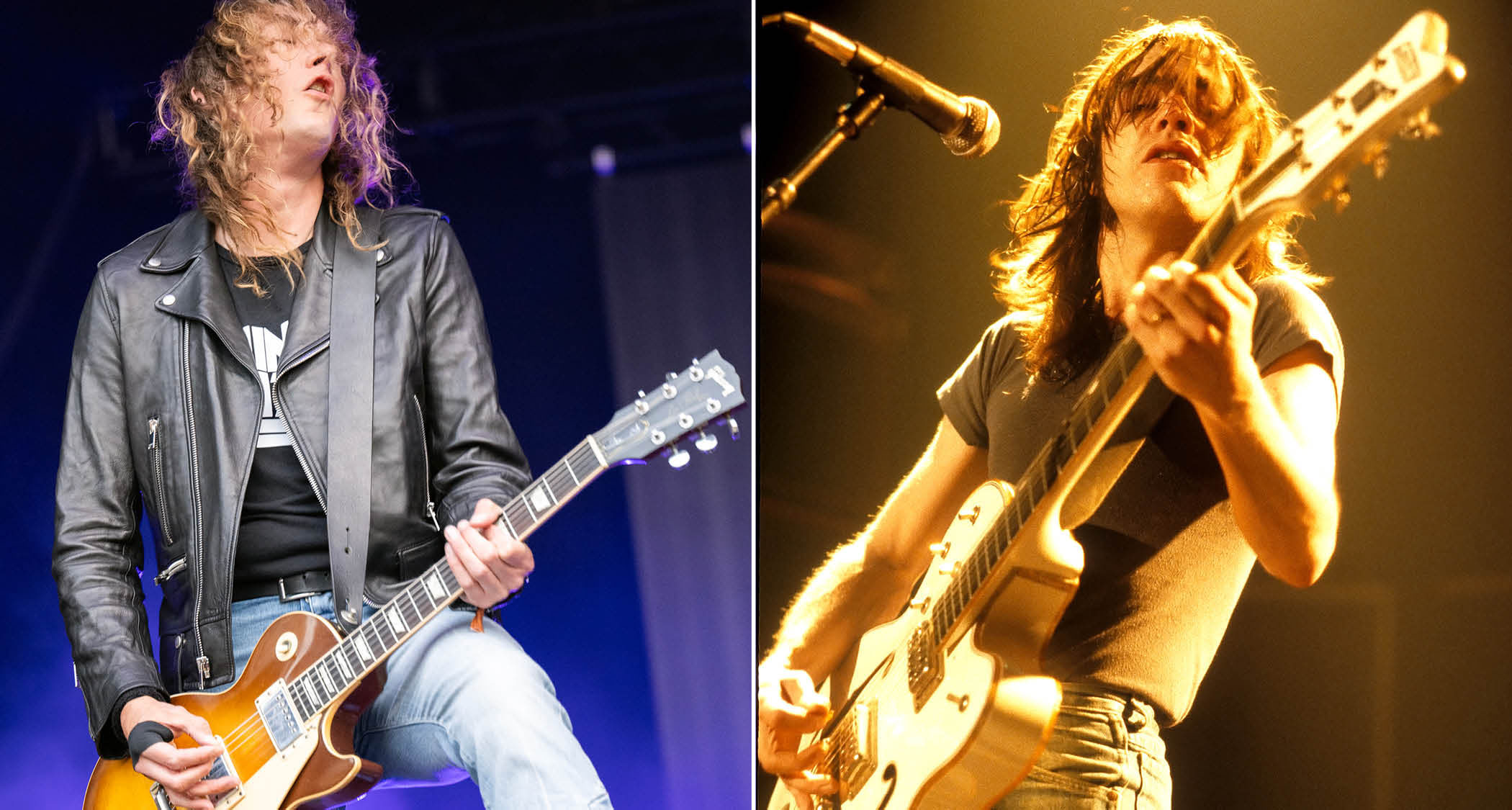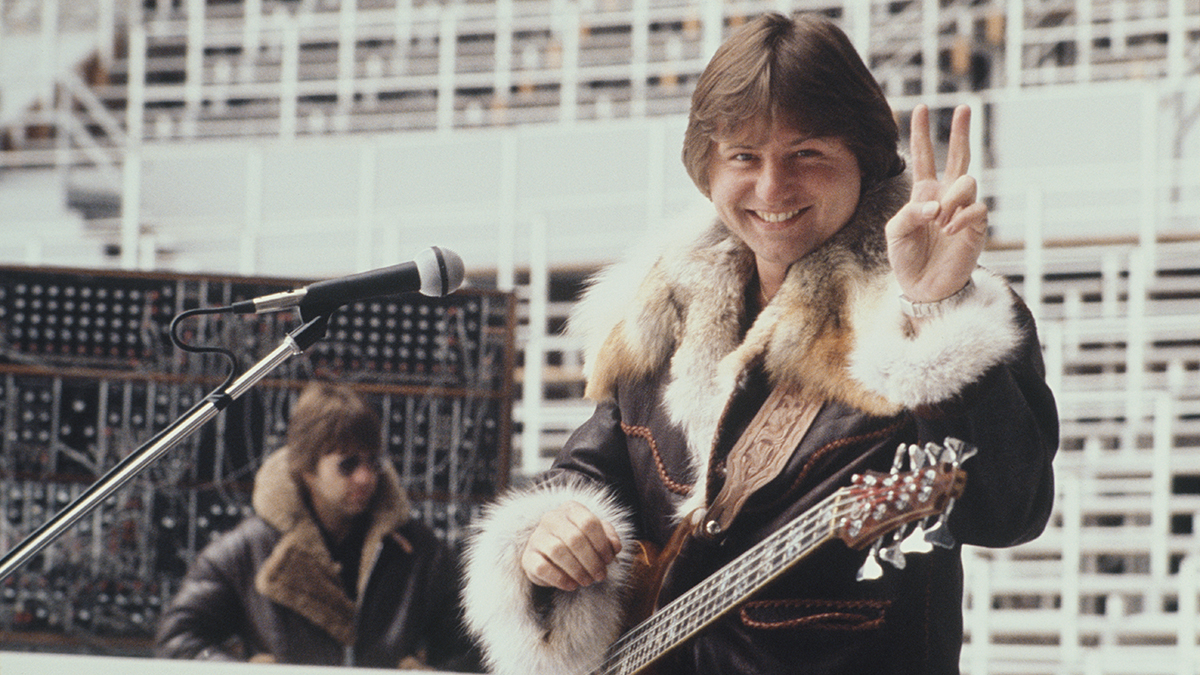“We were playing in Germany the day Malcolm died. It dawned on me that he was the reason I’m making a living from rock guitar. I shed a tear onstage that night”: The Darkness’ Dan Hawkins on why Malcolm Young is one of rock’s most underrated guitarists
The Darkness rhythm man says he put the 10,000 hours in trying to match Malcolm riff for riff, chord for chord, but the unstoppable AC/DC guitarist's style is beyond most mortals

As the rhythm guitarist holding down the fort while his brother plays lead, Dan Hawkins is the Malcolm Young of The Darkness, so who better to explain why the late rhythm king was the best in the business, and how anyone would go about emulating him?
Hawkins has tried, but it is easier said than done…
When did you first become interested in the art of rhythm guitar?
“It was my brother, Justin, who turned me onto AC/DC. I immediately picked out the rhythms as something I could do. I could hear this guy playing in a way that made me think, ‘Gosh, I might actually be able to do that!’ Malcolm’s approach was groovy but also angry and aggressive.
“He wasn’t playing lightly. His parts sound simple, but when you delve deeper, despite being mainly open chords, they’re quite intricate. Let’s put it this way: I struggle to play barre chords! I spent two years with the stereo panned hard left so I could only hear Malcolm.
“I did my 10,000 hours of trying to copy him. To some extent I failed, but it helped me find my own way. If you try to emulate him, it’s like sport: mess up once and the whole thing is gone.
“But Malcolm never put a foot wrong. He was always in time. If the rhythm section started to drift, he would go with it and then pull them back into line. You can hear that on the live stuff… it’s incredible! He’s got to be one of the most underrated guitarists ever.”
All the latest guitar news, interviews, lessons, reviews, deals and more, direct to your inbox!
Malcolm usually fed his Gretsch guitars into amps like the Marshall Super Bass. Did his tone influence you as much as his performances?
“Definitely. His sound wasn’t particularly high-gain. I went from acoustic guitar to electric, so my brain was already quite anti-distortion, in a way. I liked those big open chords with very little overdrive. That’s where precision and palm-muting comes into its own, because you can’t let anything get out of control – otherwise people will hear it!”
I had the Malcolm signature for a while, but to be honest I didn’t get on with it. It wasn’t the easiest guitar to play… It’s so bright and chimey that if you don’t palm-mute correctly, it quickly becomes a clang fest
Have you ever bought a Gretsch Jet or White Falcon to sound like him?
“I had the Malcolm signature for a while, but to be honest I didn’t get on with it. It wasn’t the easiest guitar to play, which again is a testament to Malcolm. It’s so bright and chimey that if you don’t palm-mute correctly, it quickly becomes a clang fest. I’d also been playing Les Pauls for a while, so there was no going back.
“A Les Paul fattens things out better for a band like The Darkness. I’ve used a Marshall Super Bass in the past. I borrowed one in Australia recently, the same exact spec as Malcolm’s. They’re quite growly and warmer than you might expect. That’s why his rig worked so well – the Gretsch could be harsh but the Super Bass would round out the lower frequencies.”
Which song best captures Malcolm’s input to AC/DC?
“For many years, the first song I would play at soundcheck would be Beating Around the Bush! Which is actually similar to the Fleetwood Mac song Oh Well. But it’s quite tricky because there’s a lot of information happening. It’s still probably the first thing I play when I pick up a guitar and plug in.”
Where is Malcolm’s influence most evident in The Darkness?
“I’d say Black Shuck and definitely Stuck in a Rut, as well, especially as that song just sticks with an A chord and toys around with different rhythms. We didn’t even bother changing the chord with that one! But, then again, pretty much everything we’ve done is built around the same three chords. I slip into that stuff a lot because that’s how I learned how to play electric guitar.”
Some might say rhythm guitar is a bit of a lost art form…
“I’m lucky to be one of the last bona fide rhythm guitarists left in the world. Everyone else wants to be playing lead. My daughter is learning and she can already play loads of solos.
“I’m constantly reminding her to work on her engine room. You need to be digging in and supporting the band until it’s your turn to shine. My love for rhythm guitar is born out of necessity and lack of ability! I know I’ll never be a technically great lead guitarist, so I don’t bother trying.”
I remember we were playing in Germany the day Malcolm died. It dawned on me that the reason I’m on stage making a living from rock guitar was entirely because of Malcolm
Did you ever get to see Malcolm in action?
“A few times. I remember the Stiff Upper Lip tour at Wembley being ridiculously loud, something like 147dB in front of the PA. You would permanently lose your hearing stood two feet away from it. I was halfway down the arena and still couldn’t hear properly for a couple of days.
“I remember we were playing in Germany the day Malcolm died. It dawned on me that the reason I’m on stage making a living from rock guitar – the best job in the world – was entirely because of Malcolm. I shed a tear on stage that night.”
Do you have any other parting tips for nailing Malcolm’s tone?
“I think Marshall knocked it out of the park with their Studio series. One thing that frustrates players is getting the right sound without turning up really loud. Because amps are made to be driven, right? But the Studios manage to get that full sound at a much more palatable 20 watts.
“They will inspire players as much as the powerful stuff cranked. So, I’d say that’s what you need for the classic Marshall sound at a quieter volume. I actually played the Royal Albert Hall for a charity thing recently and was using one of those little Studio Super Lead [SV20C] combos. I didn’t even need the 20 watts – I used it on the 5-watt setting and it sounded massive!”
Amit has been writing for titles like Total Guitar, MusicRadar and Guitar World for over a decade and counts Richie Kotzen, Guthrie Govan and Jeff Beck among his primary influences as a guitar player. He's worked for magazines like Kerrang!, Metal Hammer, Classic Rock, Prog, Record Collector, Planet Rock, Rhythm and Bass Player, as well as newspapers like Metro and The Independent, interviewing everyone from Ozzy Osbourne and Lemmy to Slash and Jimmy Page, and once even traded solos with a member of Slayer on a track released internationally. As a session guitarist, he's played alongside members of Judas Priest and Uriah Heep in London ensemble Metalworks, as well as handled lead guitars for legends like Glen Matlock (Sex Pistols, The Faces) and Stu Hamm (Steve Vai, Joe Satriani, G3).




